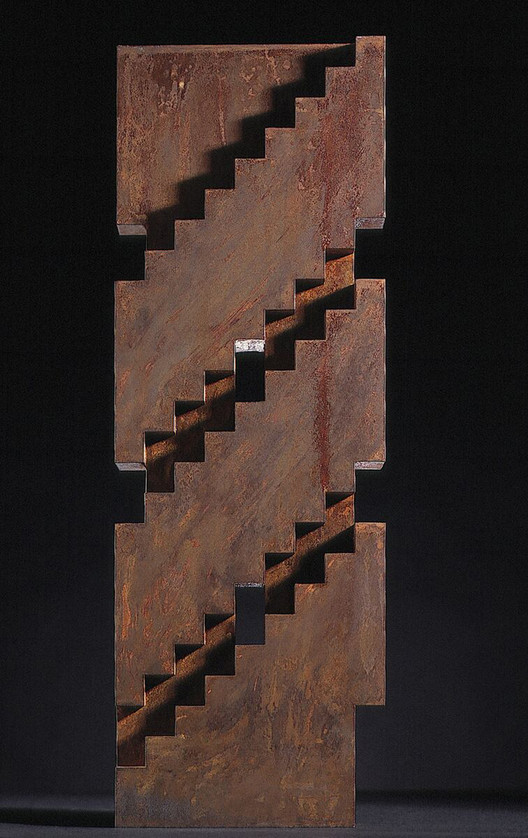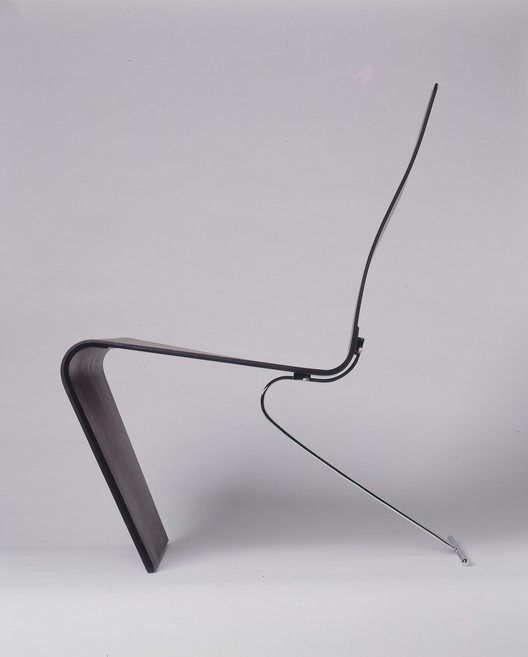
Few people in the architectural world have done more than Juhani Pallasmaa to make the complex ideas of phenomenology accessible to the uninitiated; his book "The Eyes of the Skin," for example, is recommended reading for students in countries the world over. In this interview, originally published in the October issue of Indian Architect & Builder which featured the theme of "the power of the hand," Pallasmaa talks about his similar approaches to designing and writing, and the early childhood experiences that led him to become a phenomenologist.
Indian Architect & Builder: Your practice is widely multidisciplinary; can you tell us a little about your academic journey towards the establishment of your practice?
Juhani Pallasmaa: In my country, Finland, it has been customary for students of architecture to work in architecture offices during their studies, usually from the second year onwards. I entered the Helsinki University of Technology (currently the Aalto University) in the fall of 1957. A year later, I was fortunate enough to be invited to work at the Museum of Finnish Architecture, established a year earlier, as an exhibition assistant. The Museum eventually became my real university, and also gave me the opportunity to travel the world designing exhibitions of Finnish architecture in thirty cities around the world.
In those years the Museum was the meeting point of some of the leading architectural thinkers in our country, who were members of the Le Carré Bleu Journal, founded in 1957, which focused on theoretical and philosophical issues in architecture and was published in the French language. As a young student I had the opportunity of participating in the conversations of some of the best read and philosophically oriented minds in Finnish architecture. Through this group, I became also closely related with Professor Aulis Blomstedt, the counter pole of Alvar Aalto in the Finnish architectural discourse. He was deeply engaged in studies of proportional harmony in architecture, and his influence guided me to thinking about architecture beyond the practicalities and aesthetics of professional practice. I also compiled and designed two exhibitions of his Studies in Harmony, and one of them was even shown at the Le Corbusier Foundation in Paris, and later in Tokyo.
I also collaborated with a number of gifted friends of mine, Kirmo Mikkola, Erkki Kairamo and Erkki Juutilainen, and a bit later with Kristian Gullichsen. We worked on a variety of projects from summer houses and small residences to industrial housing systems and urban design projects. I finally established my own office in 1983 and worked on all kinds of design tasks. At the largest, my office employed over forty people. I have always been interested in the entire field of design from graphic, product and exhibition design to architecture and urban design. I have also had various administrative jobs, such as Rector of the Institute of Design, Head of Exhibition Department and Director of the Museum of Architecture, and professor and dean at the Helsinki University of Technology. I have also had a number of visiting professorships abroad. Since the late 1970s writing, lecturing, teaching and travelling have taken an ever larger role in my work.

IA&B: Your approach to design can be viewed as an amalgam of philosophy influencing contemporary architecture and a field of academic research of the sensory experience of the built environment. What role does your identity as a Phenomenologist have to play in developing this point of view?
JP: I spent the decisive years between the ages of 4 and 9 during World War II at my farmer grandfather’s humble farm in Central Finland. As I was the only boy within kilometers, my childhood days were filled with boredom, but I learned to make observations, of people and their work, but also of animals and their constructions in the forests, fields and rivers. Twenty years ago I even made an exhibition and book on animal architecture.
In retrospect I can say that I became a ”phenomenologist” as a child, much before I could even pronounce the word ”philosophy,” not to speak of what it might mean. Since my childhood I have had an intellectual and analytic interest in the essences of things. In my second year of studies, I edited the journal of the students of technology, and turned it into a serious cultural journal with some of the most brilliant thinkers, writers, poets, composers, artists and architects as contributors. That early experience in 1959 familiarized me with editing and publishing work.
IA&B: You have written about haptic devices that can direct how one can think or experience architecture. Can you elaborate on the importance of this approach?
JP: in my early childhood I participated in the daily work at my grandfather’s farm, and later during my high school years, I worked in a furniture factory and various construction sites. Working with my body and hands has always been important for me. When I began to study seriously the human senses in the late 1980s, I gradually realized the importance of tactility and touch. Later, I have regarded touch as the integrating sense, that fuses various sense impressions into a coherent and full existential sense. One of my recent books is entitled The Thinking Hand. In my own design work, I am concerned how the designed things feel to the touch of the hand, either concretely or imaginatively.
IA&B: You are a prolific author and academician. How do your creative pursuits engage with each other and give rise to architecture that stands to make a statement?
JP: I have always worked simultaneously on different projects, and even design and writing have increasingly become similar for me; both are explorations. Particularly after I learned to write in the same way I sketch, without a clear advance plan or, often without any kind of idea at all of what I will be doing. Writing has turned into a journey or adventure for me. After I have written the first sentence, the process begins, and I even frequently end up eliminating my first sentence or changing the title several times. My writing always arises from my personal observations and thoughts. I do use a lot of quotes, but that is for the purpose of creating a layering of thoughts from various historical eras. I quote thinkers, writers, scientists, artists, etc, because of my respect for what they have established and to place myself in that continuum of tradition.
Early on I also became conscious of what I was aiming at in my work, too conscious, I would say today. A high level of self-consciousness can become a problem as it interrupts the unconscious flow of thought.

IA&B: You’ve spoken about "Silence in Architecture," what message do you wish to convey through your work?
JP: An emotive content is crucial in architecture as in all arts, but I have the attitude that no one else should be forced to live my emotions. So, I try to create sensual, emotive and responsive images – in matter and words – which can receive and reflect anyone’s personal feelings or emotional tendencies. I attempt to make resonant things.
IA&B: In your book "The Eyes of the Skin" you mentioned “the door is the handshake of a building”, can you express the importance of details within architecture?
JP: Details ultimately articulate and define the idea. A sense of tactile intimacy is important for me, and I attempt to detail my buildings and objects so that they are inviting in a tactile sense. The same applies to writing; an essay can be too straight forward, rationalized and forcefully persuasive. I like my thoughts to meander instead of being too logical. I wish my writings to have an unexpectedness and non-linearity, that could bring somewhat surprising views into focus.
I also like my sentences to include ideas that I never intended or aimed at.
IA&B: You have authored the book "The Thinking Hand"; what according to you is "The Power of The Hand"?
JP: There is a rather wide agreement in science that our amazing hands are not products of our spectacular brains, but we have our amazing brains due to our spectacular hands. The body and the hands participate in everything we do, perception, remembering, thinking and imagining, not to speak of physically making something.
IA&B: Astronomy, philosophy, geometry, etc. are factors that can have an impact on architecture. What, in your opinion, are the influences of these disciplines on the way we build today?
JP: In my view, architectural practice today has become too specialized, self-contained and too detached from true living culture, arts, knowledge and life in general. In my view, everything is related with everything else, and as an architect you can nourish your mind through philosophy, poetry, art and the sciences. The important thing is that your mind keeps seeking for new things and their interrelationships. Besides, the best medicine against the negative consequences of aging is to maintain your sense of curiosity.

IA&B: Your project the Korundi, Rovaniemi Art Museum and Music Hall is possibly your last built project. Can you guide us through the significant features of this project and describe the importance of culture in the success of architecture?
JP: I was engaged with the Korundi project for nearly 25 years, and it is originally a utilitarian building without any special architectural qualities, and I have tried to give this building a second, more civilized and dignified life, in dialogue with the new functions and architectural interventions. My favourite architectural task is always to give a valueless and perhaps ugly building new meanings and a new sensuality.
IA&B: Given the rapid pace of evolution in technology, what advice would you have for the budding architects of the future?
JP: Technology is essential in architecture, but the poetic and artistic qualities have always an existential origin and motif. Architecture arises from a heightened sense of life. I would advise students to look at everything, including technology, with sensual and poetic eyes. The true task of architecture is to ennoble our daily life.


